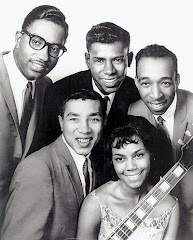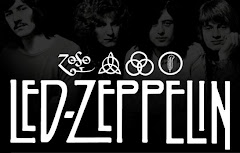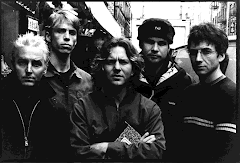Robert Johnson Sells his Soul to the DevilRobert Johnson has been considered by many the father of blues. It was not until years after his untimely death at age 27 on August 16, 1938, however, that he gained most of his fame. His mysterious life and passing have only added to a mystery that has followed his legacy for so many years. It is said that, “…Robert made a deal with the Devil; in exchange for his soul he wanted to play the guitar better than anyone” (Downs). It is part of old southern mythology that if you go to a crossroads on a night with no moon, the devil will appear to make a pact with you. For Johnson, the story goes that he went to a crossroad on such a night where the Devil came to tune his guitar, played a few songs on it, then returned it which was a pact that for indescribable musical talent, he would sell his soul to the devil. Some say that his early death along with some of his different attributes. “Some fans thought that he had the "evil eye". Actually, he suffered from a small cataract. Also, it has been reported that Johnson turned from the audience while playing, and would leave suddenly from a performance, sometimes even during breaks in his set. While today such actions are not considered odd, in those days they were. Many people took it to mean that he was a man with something to hide” (The WB Television Network). There is no possible way to know much more then the legends that surround his name because his entire life is one of the greatest mysteries of music history.
Ozzy Osbourne's taste for doves and batsFor years, Ozzy Osbourne has been known for his unusual ways as well as his substance abuse. While this reputation fits his lifestyle and career as lead singer-bassist of the theatrical band Kiss, several times Ozzy has surprised everyone with his actions. Two of these well known stunts are the stories of Ozzy biting of the heads of a bat and a dove, both of which have been confirmed as true. In 2004, James Sullivan writes for Rolling Stone that during one of Kiss’s performances on their “Night of the Living Dead” tour, a member of the audience threw a live bat up on the stage, but the creature became stunned by the lights and lay motionless. “Osbourne, thinking it was a rubber toy, bit into its neck. He was rushed to the hospital and tested for rabies” (Sullivan). Although Osbourne claims to not know the bat was real let alone alive, Kyle Munson writes about the time Osbourne bit the head off of a dove that he knew was alive and in his pocket. Munson writes that, “He bit the head off a live dove in 1981 in Los Angeles, during a meeting with horrified record-company executives.” Osbourne later states that he was intoxicated at the time, but that did not stop people from telling these stories that would continue to reappear in his career from then on.
The mythology surrounding the Abbey Road coverThe myth’s and suspicions about the Abby Road cover of the Beatle’s album goes along with the continued rumor that Paul McCartney had actually died and was replaced by a look alike. Many people believed that Paul died in a car accident while the Beatles were at the height of their career. Not wanting to give up their success, the band mates found a Paul look-alike to replace him so no one would know. Massimo Polidoro, author, psychiatrist, and investigator of paranormal actives, writes about the rumored “clues” the band left that pointed to McCartney’s death. On the cover, the four Beatles are walking across a cross walk which fans thought symbolized a funeral procession. Polidoro writes about each member’s supposed symbolic meaning in his article “A Myth that Rocks: The Premature Death of Paul McCartney” in 2005:“…John Lennon, dressed in white, represented the Church (and white is the traditional color of mourning in many Eastern cultures); Ringo, dressed in black, represented the undertaker. Paul was out of step with the other three Beatles, with his eyes closed and barefoot: in a number of societies, it appears that corpses are buried without their shoes; furthermore, Paul held a cigarette in his right hand, when everybody knew that the real McCartney was left-handed! George Harrison, last in line, was dressed in work clothes and, to many, represented the gravedigger.”Polidoro also talks about other hidden “clues” such as the license plate that reads “LMW 28IF” which was supposed to mean that if McCartney was still alive, he would be 28 years old. Similar “clues” were found in songs and other album covers. The number of these far fetched “clues” started to actually convince people that he was dead. It wasn’t until Paul made a statement that he was still alive that this legend ended.
Bob Dylan goes electricBy 1965, Bob Dylan had emerged as a popular folk singer. He’s original sound was playing an acoustic guitar and occasionally other “folk-sounding” instruments. On July 25, 1965, Dylan was playing at the Newport Folk festival. He decided to switch his acoustic for and electric guitar and to be backed by a small, just “thrown-together”, electric band. “Previously known as a folk artist, this was Dylan rejecting his acoustic roots and opting for the amped up thrills of rock” (BBC). The BBC also goes on to say that, “The first song Dylan and band played was met with a confused response from the audience. By the time they'd finished a scrappy version of his recent single ‘Like A Rolling Stone’, the grumblings of the audience had turned into booing.” It would appear that the audience was completely taken back by his change and was offended that he did this. Later reports say that the crowd was divided between booing at the electric guitar and booing at the noise because it was so badly performed.
Phil Collins’s “In the Air Tonight”Phil Collins’s “In the Air Tonight” is a widely popular song that most people are familiar with. Many may also know the stories that go along with it. Although Collins wrote the song metaphorically about his failed marriage, many took the song literally about watching someone drown. Although there are many variations to the story there are two basic ones: Collins himself/another man watched a friend drown without trying to help him when he was younger or it is about how his wife was raped. Both stories gained momentum and people started to say that Collins, “…hired a private detective to find the man, sent him a free ticket to his concert, and premiered the song that night with the spotlight on the man the whole time” (Songfacts). Collins became frustrated with absurd stories and continues to hear the whispers every time he comes to America.
The mythology presented in the Sgt. Pepper coverThe Beatle’s Sgt. Pepper was another album cover that was used in several different Beatle’s theories and legends. It has a picture of the four band mates in full band attire but they are surrounded by a peculiar crowd. Most of the space on the cover is filled with cut outs of mostly famous people. I am able to recognize a few of these cut outs, including Edgar Allan Poe. Poe was a poet and short story writer whose favorite subjects were the macabre and supernatural. He had an unfortunate life filled with death and despair that lead him to write this stories as well as become and alcoholic and, “Throughout his life those illnesses had interfered with his success as an editor, and had given him a reputation for intemperateness that he scarcely deserved” (Wilson). Another familiar face is that of Bob Dylan. “Bob Dylan's influence on popular music is incalculable. As a songwriter, he pioneered several different schools of pop songwriting, from confessional singer/songwriter to winding, hallucinatory, stream-of-consciousness narratives. As a vocalist, he broke down the notion that a singer must have a conventionally good voice in order to perform, thereby redefining the vocalist's role in popular music. As a musician, he sparked several genres of pop music, including electrified folk-rock and country-rock” (All Media Guide). Marilyn Monroe was also a recognizable feature on the cover. During her life, she was widely successful in modeling and acting and, “She still remains popular today as an icon of sex appeal and beauty” (A&E Television Networks).
Some faces that are not so familiar to me are those of Stuart Sutcliffe, Carl Jung, and Richard Lindner. Stuart Sutcliffe appears off to the side of the crowd on the cover away from the band, but he was actually a former member of the Beatles. Sutcliffe was, “…was a painter and the original electric bass guitarist of The Beatles for fifteen months (May 1960–August 1961). Sutcliffe earned praise for his paintings, which mostly explored a style related to abstract expressionism. Sutcliffe is one of the group of people sometimes referred to as ‘the fifth Beatle’” (Wikipedia). Carl Jung’s work, Kendra Cherry writes, “left a notable impact on psychology. His concepts of introversion and extroversion have contributed to personality psychology and also influenced psychotherapy.” Although some of his work is not held to high standards by all, is impact on psychology is definite. Richard Lindner was a famous German artist who did most of his work in America. “His work has been described by art critics as "mechanistic cubism." Infused with personal imagination, his style has overtones of the "Cabaret-Berlin" culture of the 30's…” (Barewalls Interactive Art Inc.). The Beatle’s Sgt. Pepper’s certainly has a wide rang of people to grace its cover.




